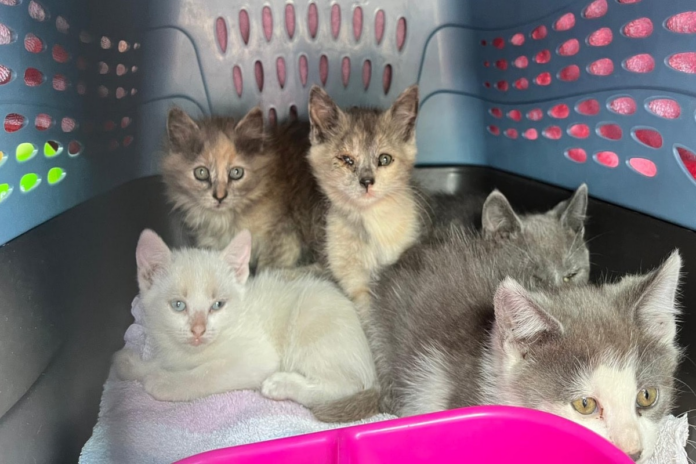Okanagan Humane Society overwhelmed with more than 300 animals in care
Inundated with animals, the Okanagan Humane Society is being stretched further than it has ever been in 28 years with both rescuing and offering pet assistance.
According to OHS president Romany Runnalls, over the past two months, there has been an explosion of cats, kittens, dogs and pups that the society has never seen before.
“This is a perfect storm that has been brewing for three years, post-COVID with people taking on animals for companionship who are then faced with a soaring and crushing inflationary rise in the cost of living. A very large portion of our population is finding they absolutely cannot afford veterinary costs on top of their basic living expenses,” said Runnalls.
But adding to the situation that is putting pressure on OHS is that the Vernon BC SPCA closed its doors in November and about two months ago the Kelowna BC SPCA started limiting intakes due to a panleukopenia outbreak. As well three smaller local rescues have ceased operations.
This has led to OHS currently having 300 animals in care and 195 of them are kittens.
In May, there were 165 requests for help to OHS.
“One request does not mean one animal and could be many,” explained Runnalls.
Four of the requests in May included a situation with 24 animals, another needed assistance with 29 animals, a third call had 38 animals and a fourth request had 55 animals at just one property.
Many of the animals that OHS went to assist were pregnant, which increased the number further.
“This influx of more than 150 animals has filled up foster homes and stretched funding,” said Runnalls. “We operate a foster-based model to keep our costs down, directing at least 95 per cent of every donation to basic medical care including spay and neuter services, vaccine, deworming and identification.”
Since Jan. 1, OHS has had 1,451 requests for help with rescuing animals from the outside as well as with spaying/neutering and medical costs. This is nearly eight requests per day, according to Runnalls, and each request can have anywhere between one to more than 50 animals per situation.
Runnalls says the solution is to spay and neuter as many animals as possible, including pets and those living in outdoor colonies, urban and rural.
“Our mission since inception has been around controlling the pet population and we continue to be committed to this work, however, the number of low-income spay/neuter requests and rescues of community animals that need to be sterilized has grown substantially over the past few years,” says Runnalls.
The average cost of care for an animal at OHS is approximately $300. With the influx of animals from these recent cases, the charity is looking at costs of more than $50,000 per month.
“We have many great veterinary partners in the Okanagan Valley, but we need to call on veterinarians throughout the valley to play their crucial part in tackling the looming pet overpopulation crisis by offering lower prices to the public for basic spay/neuter/vaccine/deworm/microchip pricing,” said Runnalls.
OHS serves a region spanning from Osoyoos to the Shuswap. Calls are increasing in the North Okanagan for OHS since the SPCA shelter closed with the calls for that region at 32 per cent, while in the Central Okanagan calls for service are at 39 per cent, in the Okanagan-Similkameen its 15 per cent and for the Columbia Shuswap its 12 per cent. With two per cent of calls for service coming from outside the region.
Last year, OHS helped more than 2,500 animals. At only halfway through the year, they have already exceeded that number and are on track to reach more than 4,000, said Runnalls.
Runnalls urged those who can donate or provide a loving foster or forever home to go to their website at www.okanaganhumanesociety.com.




